LHASA, Feb. 1 (Xinhua) -- At dawn, herder Danba has arrived at a morning market in suburban Lhasa to set up his yak meat stall. The 70-km trip between the capital city of Tibet Autonomous Region and his home village took him just one hour.
"Thanks to the better roads, my yak meat fetches a higher price. In Lhasa City, I can charge six yuan (92 U.S. cents) more a kilogram than in my county," said Danba.
Living in Puya Village, Damxung County, a fertile pastoral area at an altitude of 4,000 meters, Danba's family keep 82 yaks.
"I used to only sell meat in the county. After an expressway opened last year, travel between Lhasa and my home can be done within a day. I have sold eight yaks so far this year, and earned a lot more than before," said the herder.
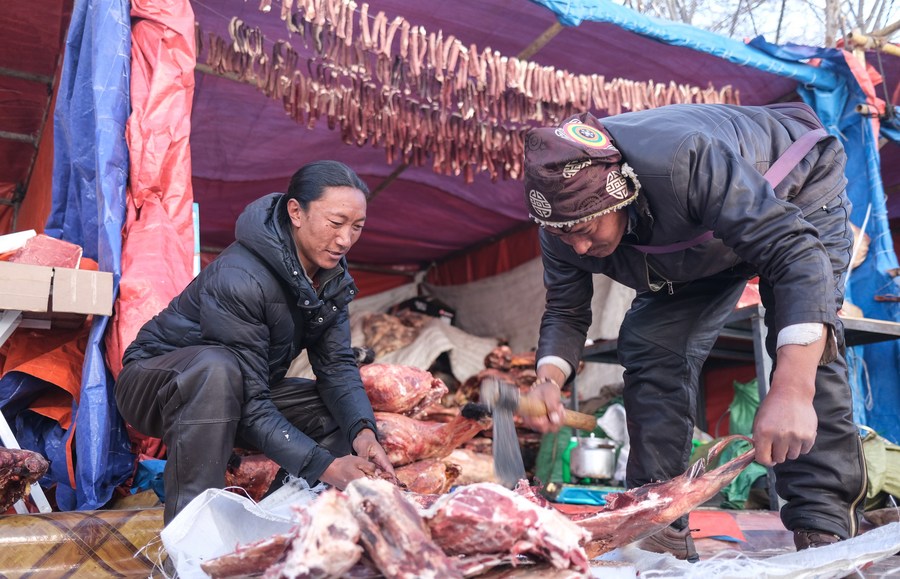
Herdsmen cut meat in Lhasa, capital of southwest China's Tibet Autonomous Region, Dec. 31, 2020. (Xinhua/Jigme Dorje)
As a Chinese saying goes, to get rich, build roads first. Danba's story is just one of many that proves the significance of a better transportation network in the plateau region of southwest China.
According to official data, by 2020, Tibet had 116,700 km of highway, a 48.9 percent increase on 2015. Over the past five years, an average of 7,500 km new highway has been built every year, equivalent to the length of the Sichuan-Tibet Highway and Qinghai-Tibet Highway, two important passageways to Tibet, combined.
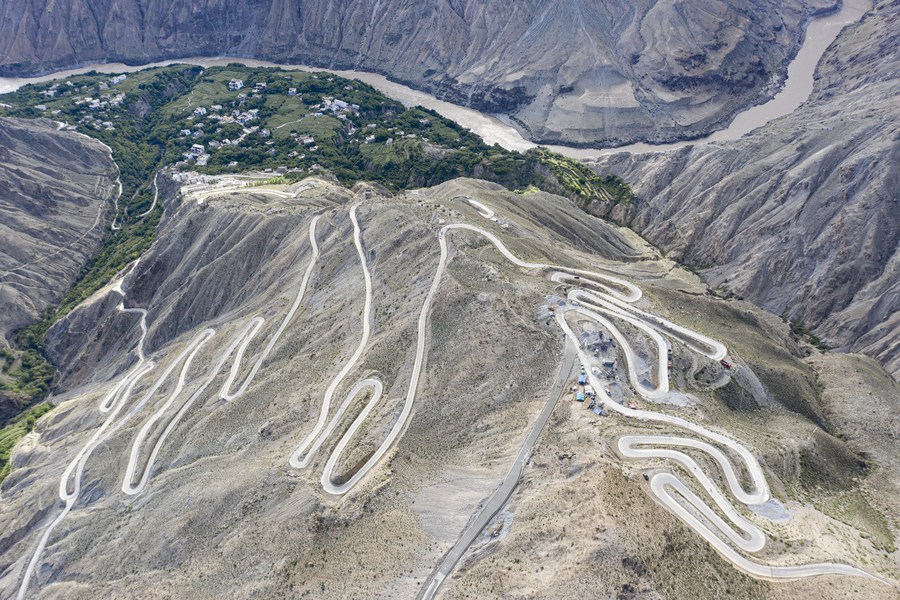
Aerial photo taken on Sept. 13, 2020 shows a road leading to Dobbar Township of of Zogang County in Qamdo City, southwest China's Tibet Autonomous Region. (Xinhua/Purbu Zhaxi)
The Sichuan-Tibet Highway, built in 1951, was the first highway in Tibet called one of "the most dangerous roads" in the country; its northern section stretches 2,412 km and its southern part reaches 2,146 km. The Qinghai-Tibet Highway stretches 1,937 km.
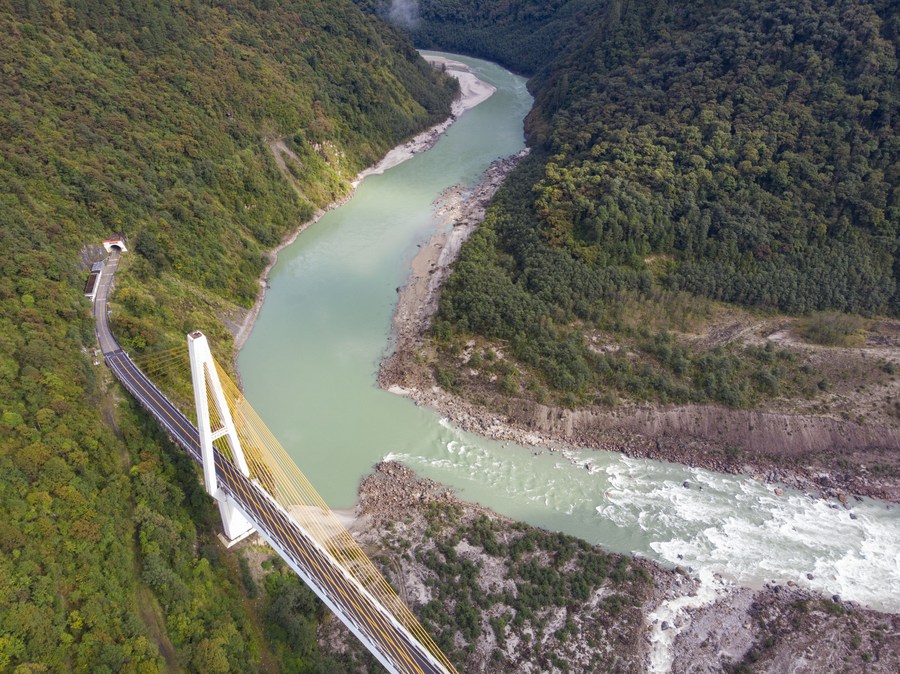
Aerial photo taken on Oct. 27, 2019 shows the Polonggou grand bridge in Bomi County, Nyingchi of southwest China's Tibet Autonomous Region. (Xinhua/Sun Fei)
Before the two highways opened, it took six months to one year on foot or on the back of animals to complete the two-way trip between Lhasa and the provincial capital cities of neighboring Sichuan or Qinghai.
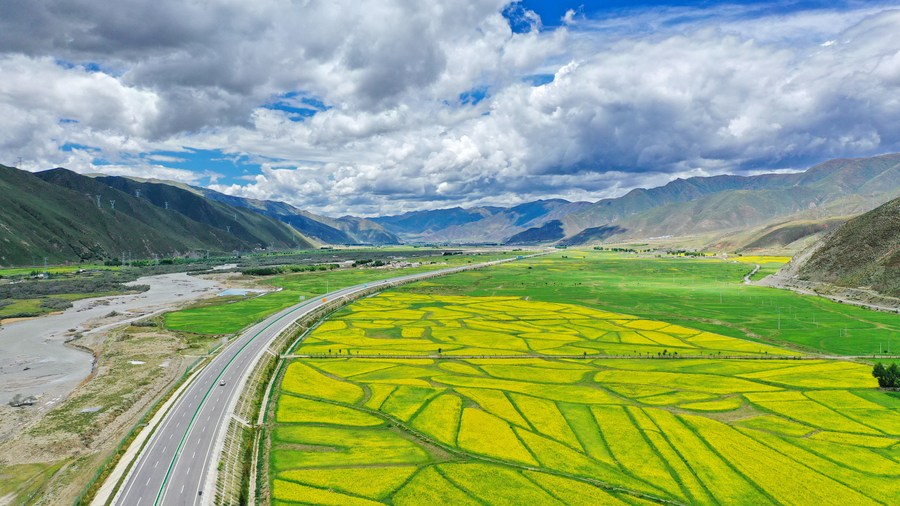
Aerial photo taken on July 16, 2019 shows a view of the Lhasa-Nyingchi high-grade road, southwest China's Tibet Autonomous Region. (Xinhua/Zhang Rufeng)
From 2016 to 2020, Tibet has invested bigger than ever on road construction, said Xu Wenqiang, head of the regional transportation. During this period, around 251.5 billion yuan has been spent on building highway, around 3.7 times of the money from 2011 to 2015.
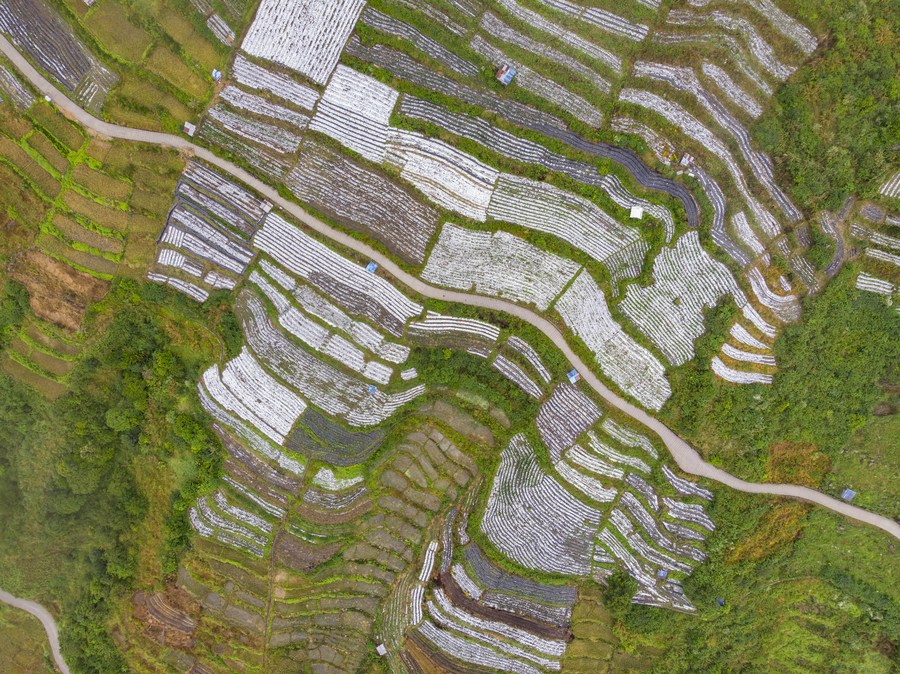
Aerial photo taken on Oct. 26, 2019 shows a road crossing a field in Medog County, southwest China's Tibet Autonomous Region. (Xinhua/Sun Fei)
Highways and expressways have linked mountains, valleys, pastoral land, towns and villages on the "roof of the world," bringing Tibetans closer to the outside world.
When the last roadless township of Gandeng in Medog County ended its isolation in 2017 with the opening of a highway, 99.82 percent of the villages in Tibet were connected to the highway network.■




